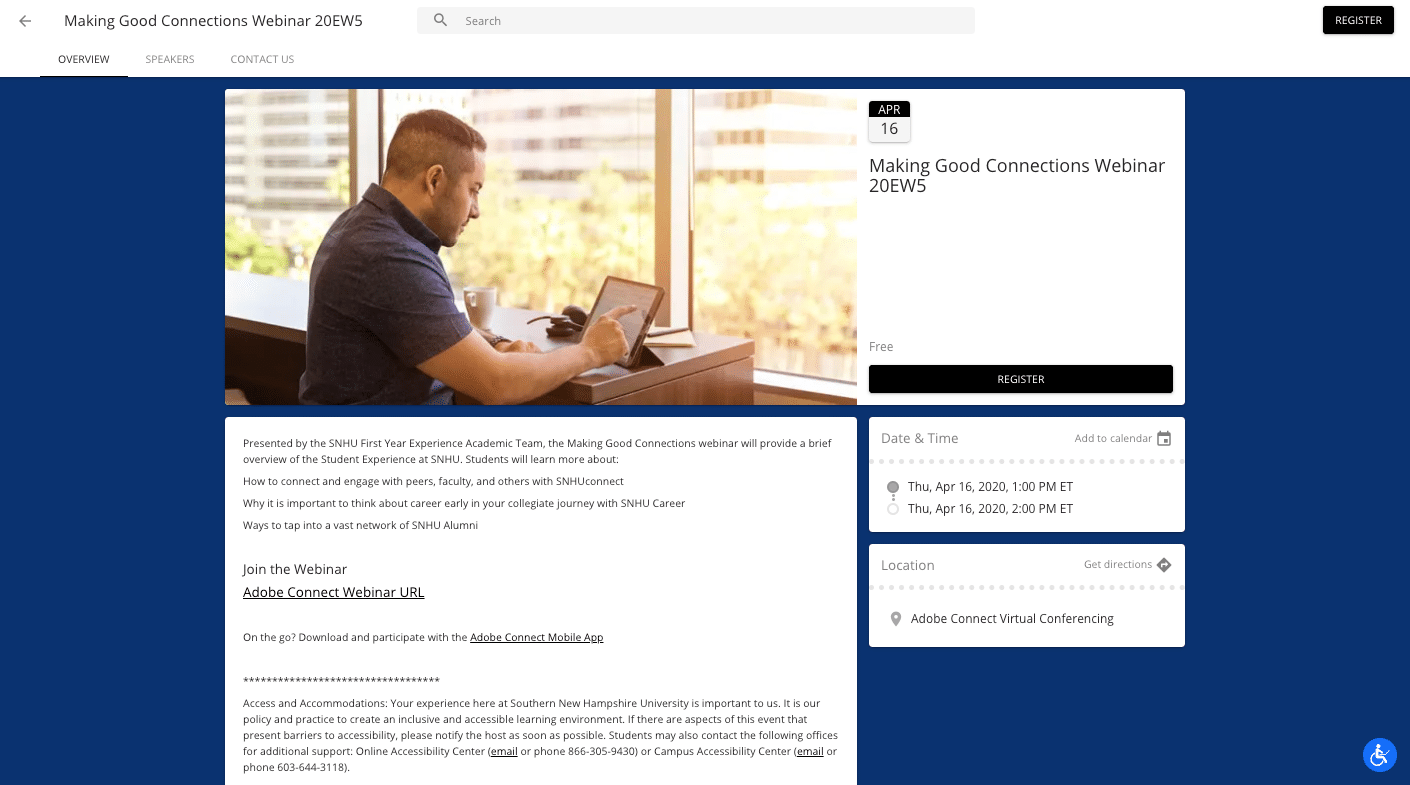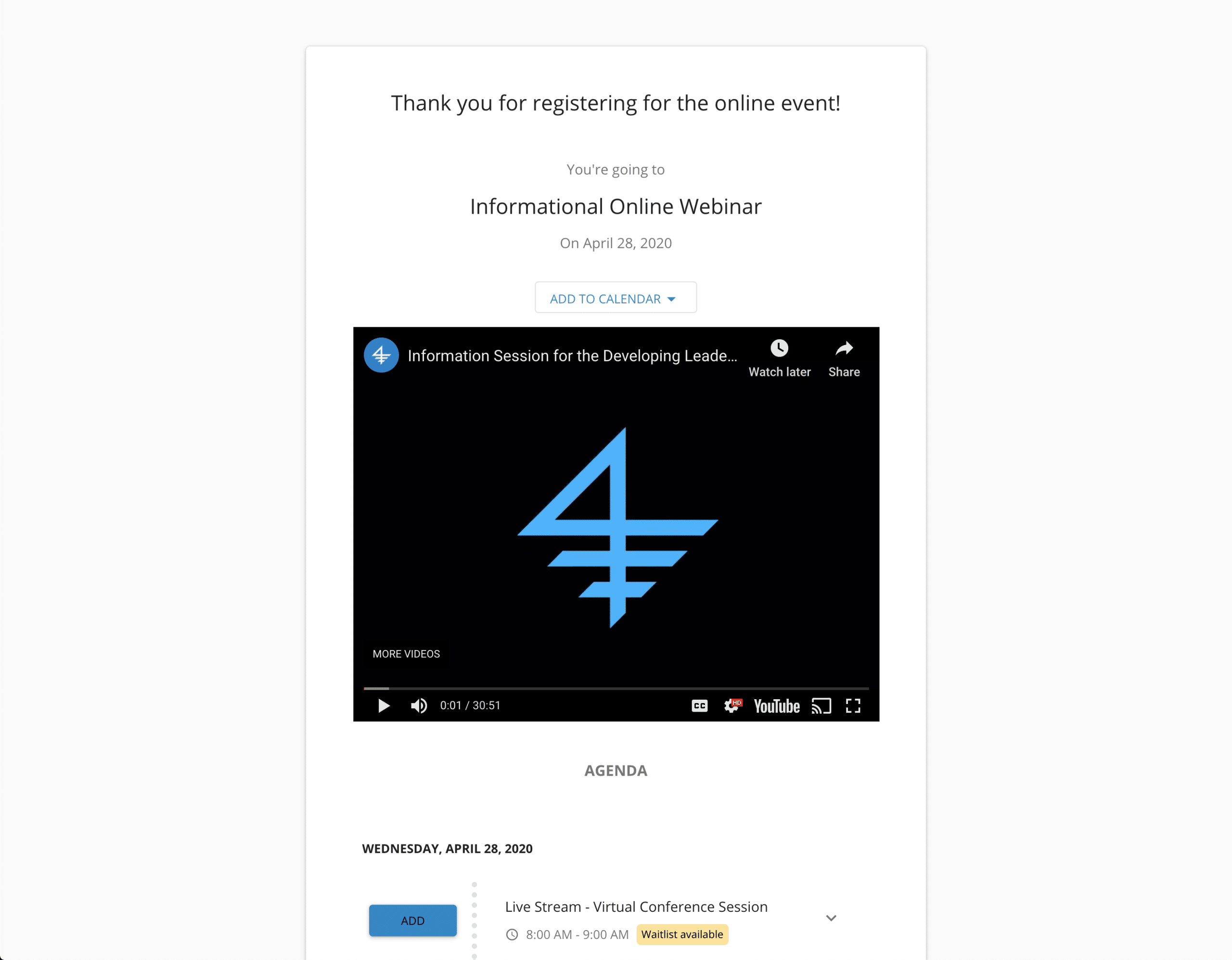Campuses around the globe have canceled their visit days, tours, and other admissions events, which are often the foundation of a recruitment strategy. The good news is, there are still ways to engage with interested prospects without having to reinvent the wheel completely. If your prospects are already online, maximizing digital marketing and virtual event tools can have a significant impact on reaching your institutional goals now and can open up new, efficient ways to communicate with prospects in the future.
1. Lean in on your digital recruitment strategy.
Most institutions already have a digital recruitment strategy. Now’s the time to kick it into high gear. If recruitment travel is canceled – high schools and college fairs, for example – use some of that budget to test out promoting your existing online content. Offer virtual tours, life in the eyes of your students through pre-recorded Snapchat takeovers, and other existing assets that paint the picture of your community.
Interested in fine-tuning your digital marketing strategy? Check out Enrollify, a trusted, go-to, digital resource for modern enrollment managers.
2. Start first by moving important, in-person admissions events online so you can still provide essential information to your prospects (and their influencers).
If you can’t get them to campus, meet them online! Turn a financial aid session for potential students or parents into a webinar, for example.
If you’re worried about low attendance due to the time of day, record the first one, and then offer that recording once a week as a “Weekly Webinar.” Prospects can review the presentation online during a time that works best for them.

3. Gate webinars and information sessions so you can offer help and the next steps.
Registration is key. Be sure to ask for the necessary information – name and email – on a form that connects them to the virtual tour or webinar.
To increase the likelihood of registrations or form submissions, give viewers a little preview of what they’re going to see before they provide information. And if you’re still worried about prospects not filling it out, offer additional incentive! Campus t-shirts are a favorite, and a .pdf with advice on unique scholarships is always helpful.
4. When looking for a solution, think about the people who come to your admissions events and how they might want to digest the information online.
For example, if you want to share a financial aid session online and you’re talking with parents, a simple “webinar” format allows you to talk through slides using your computer. If you’d prefer to stand in front of a whiteboard, position a camera in the room and use a microphone to make sure your audience can hear you.
If you’d prefer to stand in front of a whiteboard to talk on the subject, position a camera in the room and use a microphone to make sure your audience can hear you.
If your students are on campus and can walk around with a reliable internet connection, let them use Zoom on their mobile phones to give a live virtual campus tour of their favorite places. If they’re not, use a recorded version of a campus tour or Snapchat story.
5. Don’t forget to be personal.
It’s easy to turn your video off during a webinar, but people are more likely to reach out and ask questions during and after if they feel a connection with you. Keep your computer camera on while you’re talking through slides, and be sure to let individuals know you’ll offer time towards the end to answer specific questions. Zoom has a chat option that allows viewers to share comments or questions throughout the presentation.
6. Make your life easier by streamlining the entire process.
You’re using one app to create forms for webinar registrations, then sending an email through an email provider with details about the event. Then you’re manually adding prospects and their attendance status to your student database after the event. It’s a tech stack and time-consuming nightmare.
Eliminate the headache by making sure the online event software you choose integrates with your events and institutional CRM. If you’re using Salesforce, Blackthorn Events helps you handle the entire process, from planning to reporting, inside of Salesforce.
And Blackthorn Events have integrations with online video and webinar software like Zoom, GoToWebinar, Pando, Webex, Webinaris, and Vimeo, which eliminates additional data entry. Here are some of the features offered:

- Create online event landing pages and customizable registration form in Salesforce with click-not-code actions.
- Once someone registers, a confirmation page appears with a video window of your online webinar or live stream. They can watch immediately if it’s a recording, or come back to the link when it’s time to tune in live.
- Skip adding attendees and updating their attended status. Once someone joins the webinar or online event, their attendance status updates automatically in their Salesforce record, so you can easily and quickly see if they attended, or didn’t.
- Unique webinar links are automatically created for each registered guest, eliminating link sharing to individuals who haven’t registered for the webinar or live stream.
Have more questions on Blackthorn Events and their online events features?
